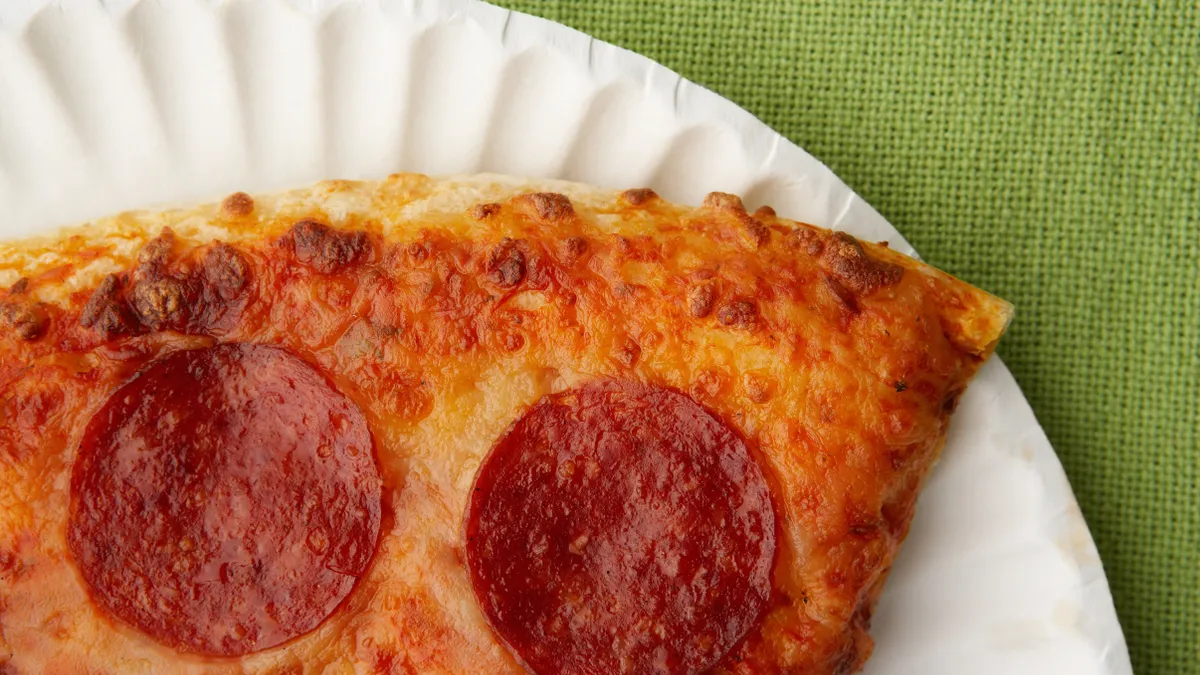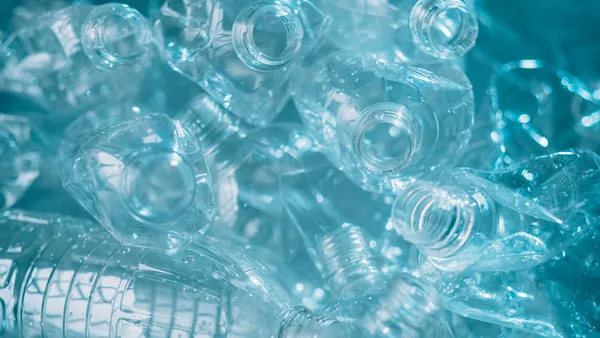As companies abandon PFAS-containing materials in food packaging amid pressure on multiple fronts, a new landscape of alternatives is emerging. But a lack of information about what these replacements are made of may complicate efforts to expand their market share.
Per- and polyfluoroalkyl substances (PFAS) were first used in packaging in the 1950s to make burger wrappers, pizza boxes, coffee cups and other disposable food containers impervious to grease and water. But in the 2000s, mounting evidence linking the chemicals to an increased risk of some cancers, reproductive and developmental abnormalities, a suppressed immune response and other issues led the Food and Drug Administration to revoke authorization for long-chain PFAS — the oldest and most common types — in food packaging.
In recent years, about two dozen states, from Washington to North Carolina, have either banned or restricted PFAS in food packaging or are considering doing so. Pressure from health and environmental advocates, as well as some scientists, has also spurred restaurant chains, grocery stores and packaging companies to make the switch.
Finding an alternative
Broadly speaking, alternatives come in one of three categories: base paper, chemical alternatives and paper alternatives. One base paper alternative is Nordic Paper's natural greaseproof paper, which is uncoated. Solenis’ TopScreen, which uses alternative chemicals, has a double or single coating to form a film on the paper wrapping. Another alternative coating is J&J Green Paper's Janus. Replacement papers include Ahlstrom's vegetable parchment papers.
The origin story for JJGP’s coating illustrates how challenging it can be to develop PFAS alternatives. The company recently entered into an agreement with Mc Papers Argentina, which supplies hamburger wrappers, french fry holders and other paper products for the fast-food industry in Latin America.
Scott Segal, founder and inventor of the Janus coating, said it took over four years of trial and error to develop a material that resisted moisture while also meeting safety and sustainability objectives. He finally hit upon a mixture that uses rice plants as its base, with some sugarcane and calcium stearate folded in.
“I was coating the paper with all these experimental mixtures, and one day the water started beading up. And then from there, I started doing laboratory testing,” he said. “I had to fine-tune it and [find] some other things to mix with it to actually make it a barrier that would adhere to the paper and wouldn't absorb [into] the paper.” The company is now ramping up production to fulfill $2 billion worth of orders for the material, which he said is also biodegradable and free of plastic.
Information on which specific substances companies are using to replace PFAS is often hard to come by. Many companies are reluctant to publicly share such details due to concerns that doing so would hurt their competitiveness. Pixelle, for example, responded to a request for information about the contents of its FlexArmor barrier barrier with a statement saying it is made of “a proprietary combination of natural and sustainable materials” that have “been used in the food industry for decades.”
A few reports in recent years by government entities and international organizations, often involving confidential talks with manufacturers to gather data, offer some insight into which PFAS alternatives for food packaging meet the bar for performance, cost and safety.
A 2021 report on PFAS alternatives by the Washington Department of Ecology concluded that “there are less hazardous alternatives that are readily available at a comparable cost that meet performance requirements” for four types of packaging: wraps; plates; pizza boxes and food boats.
Uncoated alternatives were the best option for pizza boxes, and the report gave high marks to wax-coated wrappers and clay-coated plates for other uses. Of the 10 alternative chemicals the department reviewed, six were less hazardous than PFAS, one was not and public data was inadequate to draw a conclusion about three others.
But alternatives can present their own challenges. For example, manufacturing greaseproof paper requires extra refining to produce a product that achieves similar performance. This can slow down production by 30% compared to using PFAS, according to a 2020 analysis by the Organization for Economic Cooperation and Development. Furthermore, alternative chemicals can be 11% more costly than PFAS, the report found.
Other replacements may fall short on performance. A 2021 review study by U.S. Department of Agriculture researchers on PFAS alternatives in food packaging found that coatings using materials such as starch, plant protein and chitosan serve as adequate barriers to oil but not to moisture. “A cost-effective, fully biodegradable, and environmentally friendly replacement which can be easily processed to attain the effectiveness of PFAS has remained elusive so far,” the authors wrote.
Other studies have raised concerns about the toxicity of bioplastics such as polylactic acid, which is made from sugarcane or corn.
Rethinking packaging goals
Part of the problem is that the very qualities that made PFAS so effective, such as their longevity, can be difficult to find in nontoxic substances. But some experts say that PFAS-enhanced barriers were overkill, and that alternatives don’t need to have the exact same properties as the chemicals they are replacing.
“Companies are over-designing products ... Like why do they put PFAS on a paper plate? It’s so customers don’t see a grease stain,” said Clean Production Action’s Shari Franjevic, who manages the advocacy group’s GreenScreen certification program and spent the first five years of her career working for Proctor & Gamble. “There’s this idea that these manufacturers train us on what the best product is, and then all of a sudden they have to keep selling us this best product that performs in a certain way.”
In many cases, food packaging is only used for a short time, she said, so it doesn’t need coatings that last for years — only for the minutes or hours it’s used. In its 2020 report, OECD also encouraged the industry to lower the bar for grease and water repellency to make the switch to PFAS alternatives easier.
A major sticking point as companies consider that switch is a dearth of public information about what’s in the alternatives replacing PFAS. Out of the 58 substances the OECD researchers analyzed in the U.S. and Europe, 18 had not undergone any hazard assessment or classification process.
“PFAS is one class of problematic chemicals, but we have many other chemicals that cause health problems … and they’re still legal to use,” Franjevic says.
To get around the transparency barrier and ensure that retailers are actually purchasing PFAS-free alternatives, some restaurants and grocery stores are turning to third-party certification. For example, under Clean Production Action’s GreenScreen program, an organization can agree to enter into a non-disclosure agreement with a company in exchange for the information it needs to determine whether it will certify a product as PFAS-free. So far, only two companies have become certified under the program.
In its report, the OECD urged the industry to make benefit and risk data public using aggregated figures to protect confidentiality, but it’s unclear how many companies, if any, have embraced the recommendation.
The lack of transparency can weaken public trust in alternatives, but it may also hurt the emerging PFAS-free market. “We can't let the market do what it does by people choosing different products if they don't have that information,” said Franjevic. “It really limits the ability of the market to influence what's being put into products.”














